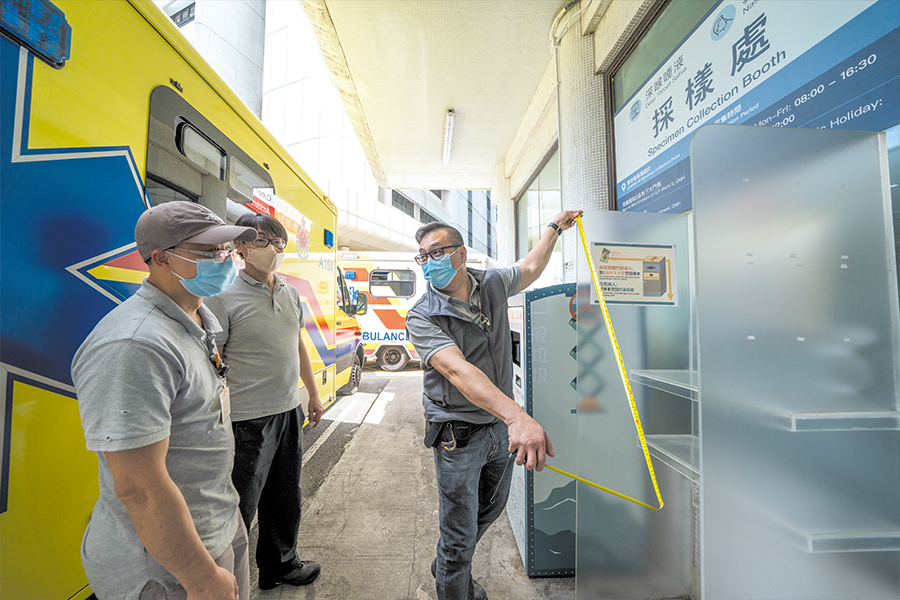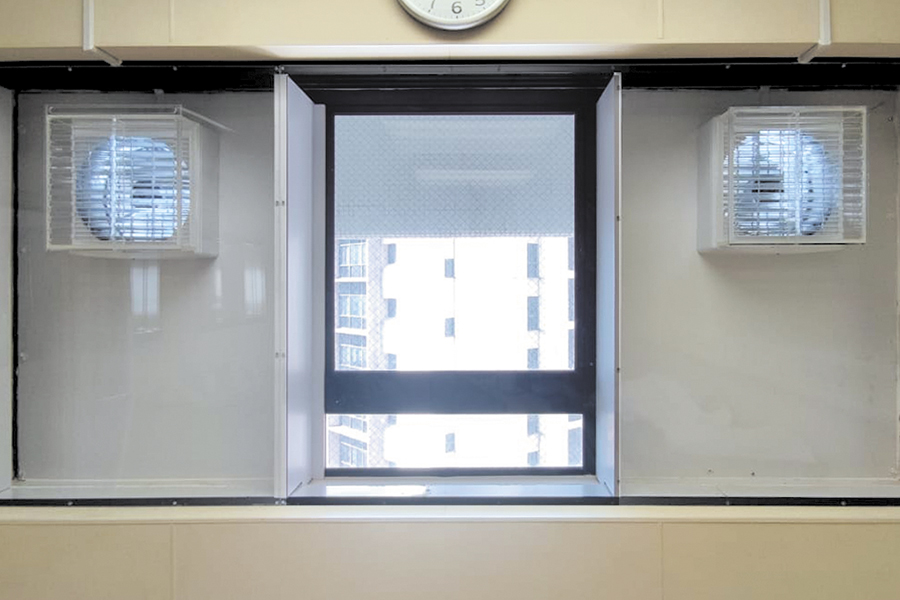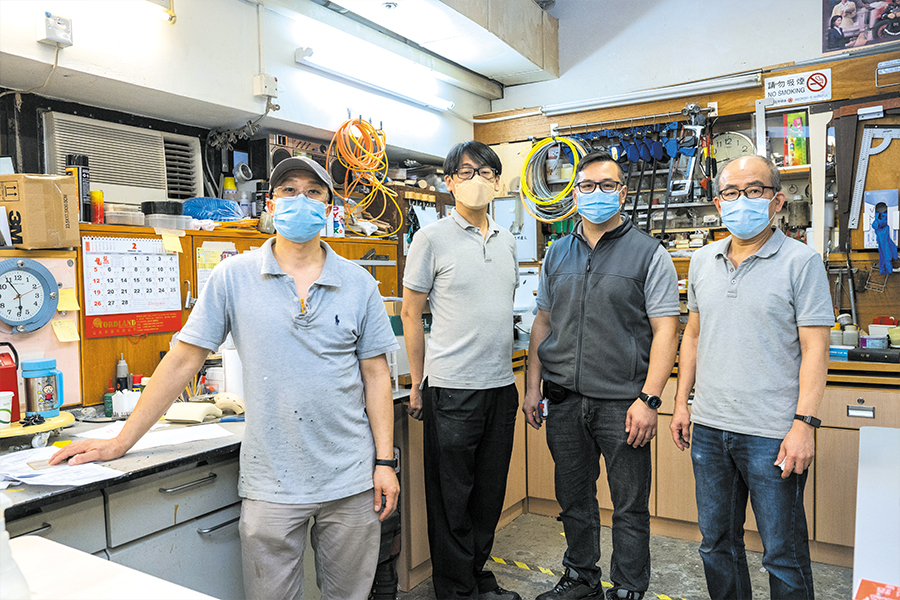The thoughtful details behind maintenance team
 During the outbreak of COVID-19, partitions and specimen collection booths made of acrylic sheets popped up around Queen Mary Hospital (QMH). The partitions and booths were created and installed by the hospital’s supporting staff as infection control measures, demonstrating their flexibility, creativity and people-centred thinking. When there was a shortage of acrylic sheets in the market, they even hunted around the hospital for used partitions to repurpose, maintaining a safe and hygienic environment for their colleagues and patients.
During the outbreak of COVID-19, partitions and specimen collection booths made of acrylic sheets popped up around Queen Mary Hospital (QMH). The partitions and booths were created and installed by the hospital’s supporting staff as infection control measures, demonstrating their flexibility, creativity and people-centred thinking. When there was a shortage of acrylic sheets in the market, they even hunted around the hospital for used partitions to repurpose, maintaining a safe and hygienic environment for their colleagues and patients.
One-stop design hub
The partitions and booths were created in the workshop on level LG4 of QMH where operation assistants of Facility Management Wong Wah-on, Lo Hing-kwok and Ng Chi-wah are based. During the epidemic, they used their craftsmen’s skills and experience to design, make, and install plastic partitions around the hospital.The team works together to refine and improve their creations, says Lo, who cites the example of a cover they made for an exhaust fan in the psychiatric ward. “Extra exhaust fans were required to increase the air change. There would be an accident if a patient touched the blades of the fan, so we designed a cover that without sealing the fan in, and protected patient safety in the meanwhile,” he recalls. Lo and his colleagues then designed and made a model, and spent a week to finish the product. They were praised by the department operations manager for their thoughtful workmanship.
 The team also works as a gatekeeper. Some of the minor works are responsible by contractors. But colleagues would fully support if refinement is needed. “A contractor may not be familiar with our operation, and may not pay attention to the details. We may follow up on their work and refine the products from users’ perspective when necessary. We hope the product would be more convenient and safer for users,” Ng explains.
The team also works as a gatekeeper. Some of the minor works are responsible by contractors. But colleagues would fully support if refinement is needed. “A contractor may not be familiar with our operation, and may not pay attention to the details. We may follow up on their work and refine the products from users’ perspective when necessary. We hope the product would be more convenient and safer for users,” Ng explains.
Acrylic sheets were in short supply during the fifth wave of the epidemic because of their surging demand for infection control and logistic issues. Nonetheless, the need for partitions in the hospital was greater than ever, especially in clinical areas like accident and emergency departments and clinics. “We looked for abandoned partitions in the hospital to reuse after further processing, so as to temporarily solve the shortage problem,” says Wong.
Scrupulous about work
The team also built six booths in the outdoor areas of QMH for specimen collection, overcoming the problems of uneven ground and bad weather conditions was challenging. Details are hidden in simple things. For example, loudspeakers were installed in several locations in QMH in the past two years for dissemination of anti-epidemic information. Colleagues had to make protective plastic boxes accordingly. They have taken into account the speaker sound, charging port, sanitisation, anti-theft and safety issues. The masculine team members are scrupulous about their work with multi-perspective thinking. Both Lo and Ng began work at QMH during the epidemic, and say they are honoured to be part of the team that helped bring the outbreak under control. “Sometimes we have to complete the infection control equipment in a short notice, which is very challenging. We wish that they were no longer necessary as it reminds us people are still getting infected. But it is meaningful to help patients at the back end.”
Both Lo and Ng began work at QMH during the epidemic, and say they are honoured to be part of the team that helped bring the outbreak under control. “Sometimes we have to complete the infection control equipment in a short notice, which is very challenging. We wish that they were no longer necessary as it reminds us people are still getting infected. But it is meaningful to help patients at the back end.”
As Hong Kong is stepping towards normalcy, the team would help enhance the facilities in the hospital with the skill set developed during the epidemic, creating a safe and cozy environment for patients and colleagues.